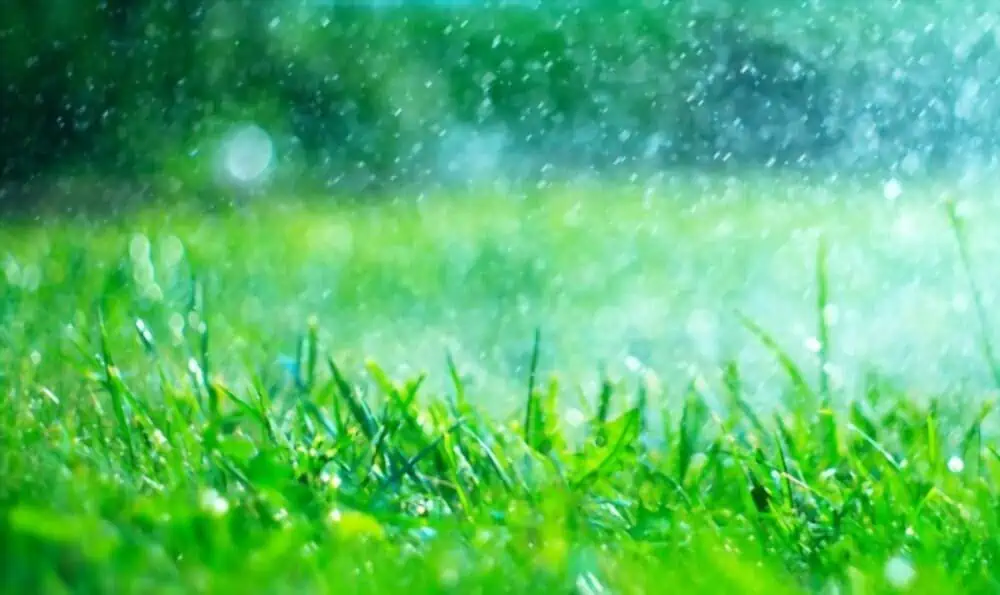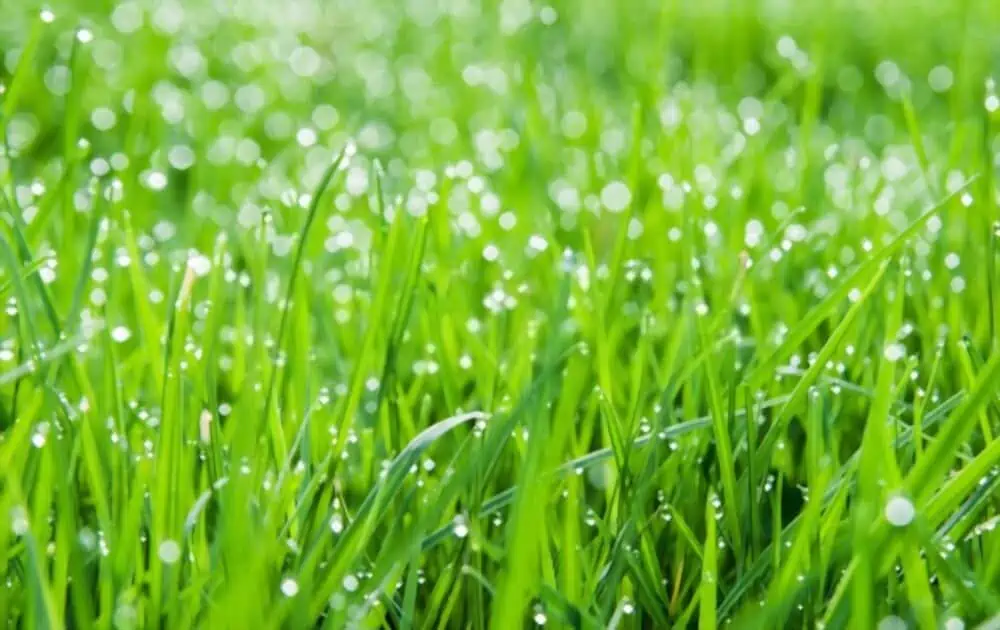When the time draws closer to cutting your grass, and the weather channel shows it will rain, you have a big decision to make.
Do you go ahead to cut the tall, unkempt grass, or will you wait until it rains? While that’s not much of a dilemma, it’s best to learn whether rain affects your freshly cut grass in a good or bad way.
Commonly, the best time to mow your lawn is dry. However, rainfall changes things. Read on to learn whether it affects your freshly cut grass.
Is Rain Good for Freshly Cut Grass?
Yes, it’s an excellent opportunity for plants to thrive when it rains. Grasses grow faster after rainfall. From research, grass can grow between 3 to 6 inches in a week with adequate rain. Since it’s the most natural way to water the lawn, it carries many benefits for the grass, soil, and organisms contributing to grass health.

When it rains, nitrogen from the atmosphere enters the soil, and in the rainy seasons, the grass grows faster, leading to frequent mowing sessions.
Also, cutting the grass before it rains, rather than after, is always better because rain speeds up turf growth and weed control. Weeds will absorb chemicals faster while your grass absorbs fertilizer for new, green growth.
Cutting Grass in the Rain: Will That Help?
Sure, you can cut grass in the rain; however, you should avoid mowing during this period. While in the rain, the grass is wet, which can be challenging for you and the grass. Drooped grass and wet conditions make achieving the kind of cut you want hard.

If you must cut grass during rainfall, observe specific safety measures, including the following:
- Use a push or gas mower. Ensure you avoid electric and riding mowers.
- Move carefully. Wear appropriate shoes to prevent falling due to the slippery wet grass.
- Sharpening mower blades before cutting because wet grass mainly offers less traction and is challenging to cut.
How to Care for Your Grass After Heavy Downpours
Some rains come with destructive capabilities, leaving your lawn facing issues. After it rains, you can take these measures to care for your lawn.
1. Clear the Debris
Remove anything that stops your wet lawn from getting dry, such as branches, leaves, and metal objects. Debris often traps moisture, which leads to lawn diseases like brown spots and red threads. However, clearing debris requires some skills and patience. These tips will help you:
- Let the ground dry enough so you don’t leave footprints or ruts behind.
- Ensure you remove moss and check your lawn for fairy rings. Some moss requires professional treatment, especially if you don’t want them to grow again.
- Eradicate any fairy ring mushroom from the roots.
2. Aerate Your Lawn
By aerating your lawn, you can extract cores of soil thatch and grass from your lawn’s surface. That way, nutrients, air, and water can penetrate the soil and reduce compaction between sediment particles.
One of the best methods to aerate your lawn is making small holes in the soil using pointed objects like pitchforks. But a core aerator is the best device because it extracts soil plugs from the soil with its tines or hollow spikes. Thankfully, you can rent one when you need to aerate your lawn.
Sometimes, you might be aerating your lawn, and it starts raining again. If it’s only drizzling, you can go ahead with the operation. However, aerating in heavy rain risks your soil, including increased compaction. It’s best to wait until all the forecasts point to a rain-free day.
3. Mow Your Dry Lawn
The keyword here is dry. If your lawn is still very wet from the rainfall, do not take your lawnmower out. Using an electric mower with an extension cord on the damp ground is typically riskier. With wires exposed to moisture damage, you could easily get electrocuted. For this reason, wait until the soil and grass become dry enough for your safety.
After light showers, it takes four to five hours for the grass to dry, while heavy rains often require a full day before cutting the grass. You’ll notice that dry grass is primarily vertical, allowing mower blades to cut through easily.
Conversely, wet grass is heavy, with the grass blades bending toward the ground. When you insist on cutting wet grass, the result is primarily an uneven, ragged lawn.
4. Follow up With Fertilizer
Keep your lawn nourished with fertilizer after mowing the yard or when the grass is freshly cut. Fertilizer is essential to maintain a healthy lawn. However, it’s best to use organic fertilizers made from animal or plant products because they have more nutrients.
Synthetic fertilizers are the other option. Even though they have fewer nutrients, synthetic fertilizers work faster on plants. If you misuse them, they can cause damage your lawn’s roots.
Since rainwater already has some nitrogen, you should wait a few days after rainfall to apply fertilizer. At this time, pools of water have disappeared, but the ground will retain some moisture. Fertilize the lawn on a sunny day to boost photosynthesis for the best results.
5. Reseed Your Lawn
After heavy rainfall, some areas of your lawn might have bald patches. You can patch such areas by reseeding them. Apply a mixture of soil and sand to prepare the areas for reseeding.
Further, if the drainage leads to your lawn, check it for water buildup so it isn’t flooded again after it rains. But if you notice pools of water taking longer to drain, create channels or runoff points where water can exit. Your new seeds will have adequate space to breathe and grow when you do so.
Conclusion
Rain is good for your freshly cut grass for various reasons, including spreading nutrients and providing a natural boost to lawn health.
Additionally, cutting your grass before it rains rather than after is best. Doing so gives you a better opportunity to help your lawn thrive, especially if you want to add some fertilizer or lawn treatment. Just wait for the grass to dry after rainfall.
Now that you know this, keep your lawn safe and clean after rainfall by clearing debris, aerating, and reseeding patched areas.






